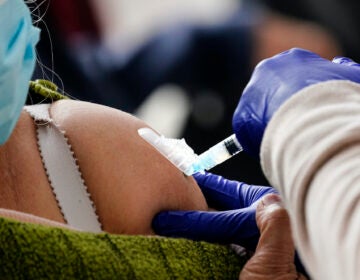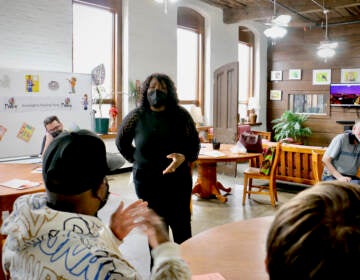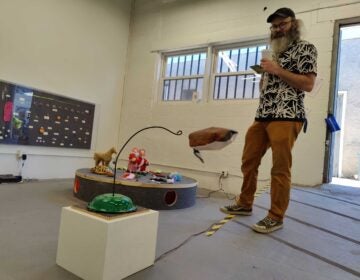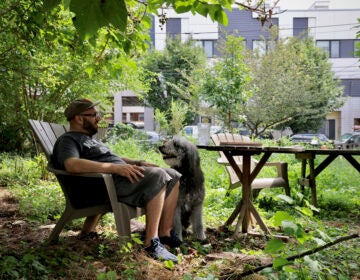Whole lot of love in Prevention Point’s new Love Lot in Kensington
A vacant lot in Kensington has been transformed into an art environment to assist Prevention Point’s harm reduction programs.

Prevention Point has a new outdoor space called the Love Lot designed to welcome and inspire those who participate in programs there. (Emma Lee/WHYY)
Prevention Point, a harm reduction and social services organization based in Kensington for over 30 years, trafficks in sunshine.
A newly outfitted vacant lot, adjacent to the church PP uses as its home base, is painted in bright oranges and yellows with a wall of suns hand painted on plywood cutouts.
“When people come in, we’re giving them love and warmth and empathy and sunshine,” said interim executive officer Silvana Mazzella. “We call them ‘Sunshines.’”
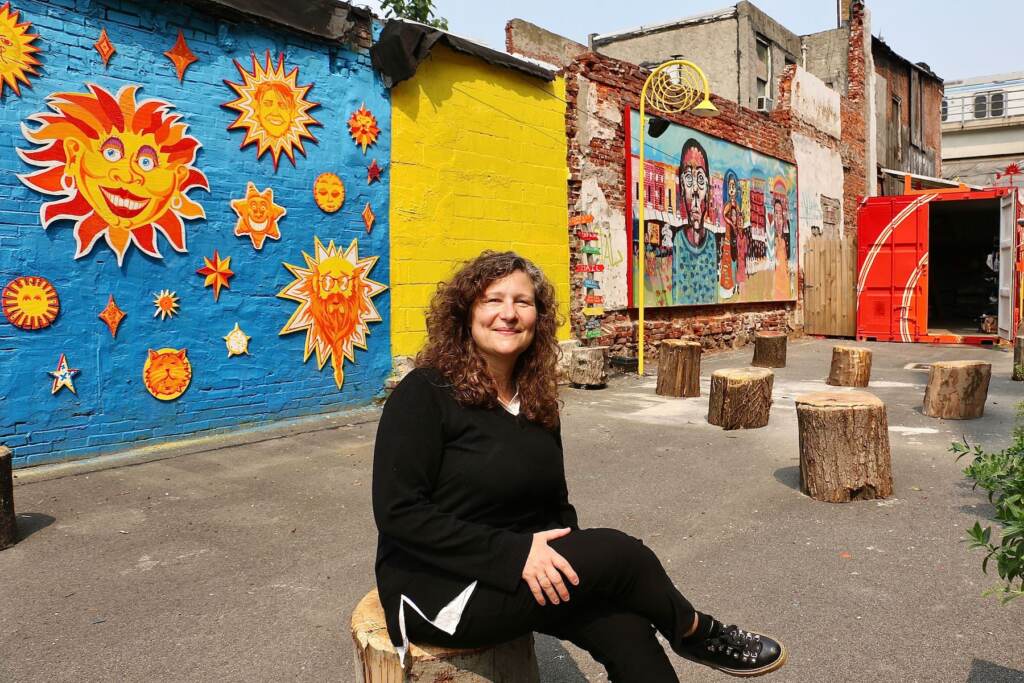
After years of using a vacant lot several blocks away to distribute free meals to people in need, particularly to people experiencing addiction, in 2021 Prevention Point acquired the paved lot behind its church to be its new Love Lot. The close proximity allows it to expand its outdoor offerings to include things like restrooms, clothes distribution, overdose reversal training, and art projects.
The number of people receiving assistance from Prevention Point has tripled since the start of the pandemic.
The open-air lot is not just abundant in sunshine and fresh air: Mazzella said it’s crucial to offer aid and assistance to some populations outdoors.
“We are sometimes serving people that are so traumatized by experiences they’ve had in other agencies that they don’t even want to come inside,” she said. “This gives the opportunity to access warmth and empathy and care and art and food and other things, outside.”
The Love Lot is sandwiched between a boarded-up house with damaged brick to the left, and a roughly patched masonry wall to the right. To the rear is the Frankford El line that howls every few minutes with passing SEPTA trains.
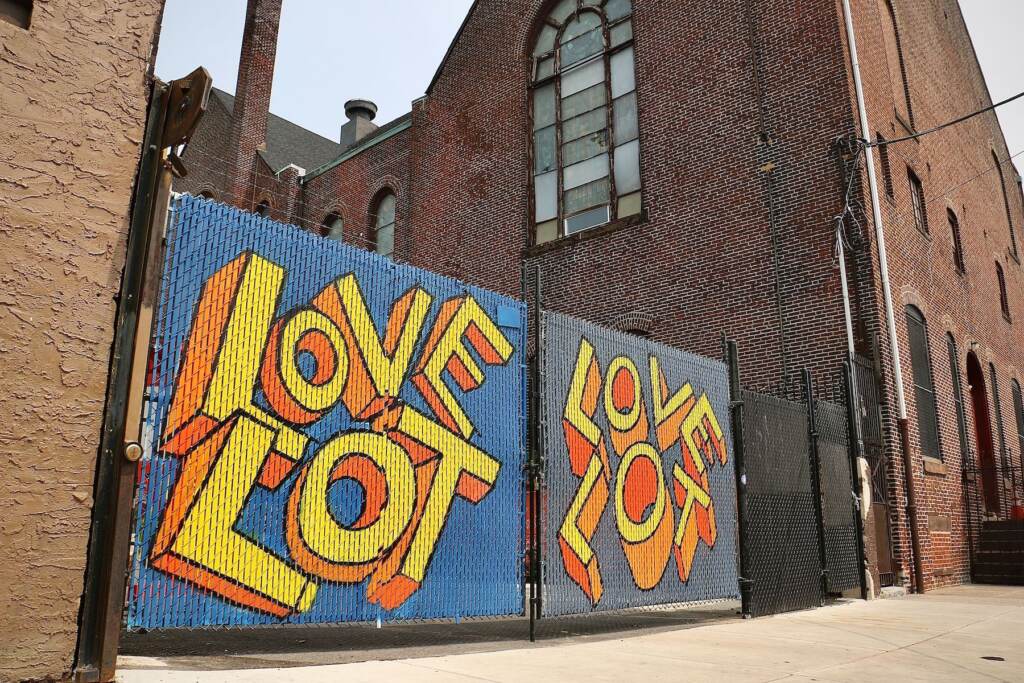
To make the lot more inviting, PP worked with Mural Arts Philadelphia and artist Jacob “Chris” Hammes to design an environment that would be more functional and more beautiful.
Instead of using traffic cones to guide people lined up in queues, Hammes developed raised bed herb gardens on caster wheels that can be rearranged to fit any programming event. Instead of stacked chairs that staff and volunteers must pull down, arrange, and then re-stacked, Hammes created a forest of log stumps that don’t need to ever be put away.
“Nobody’s concerned about these getting stolen or getting damaged,” Hammes said. “They’re not going to go anywhere. And they’re also kind of unique. It goes with the aesthetic of nature and growing and greenery.”
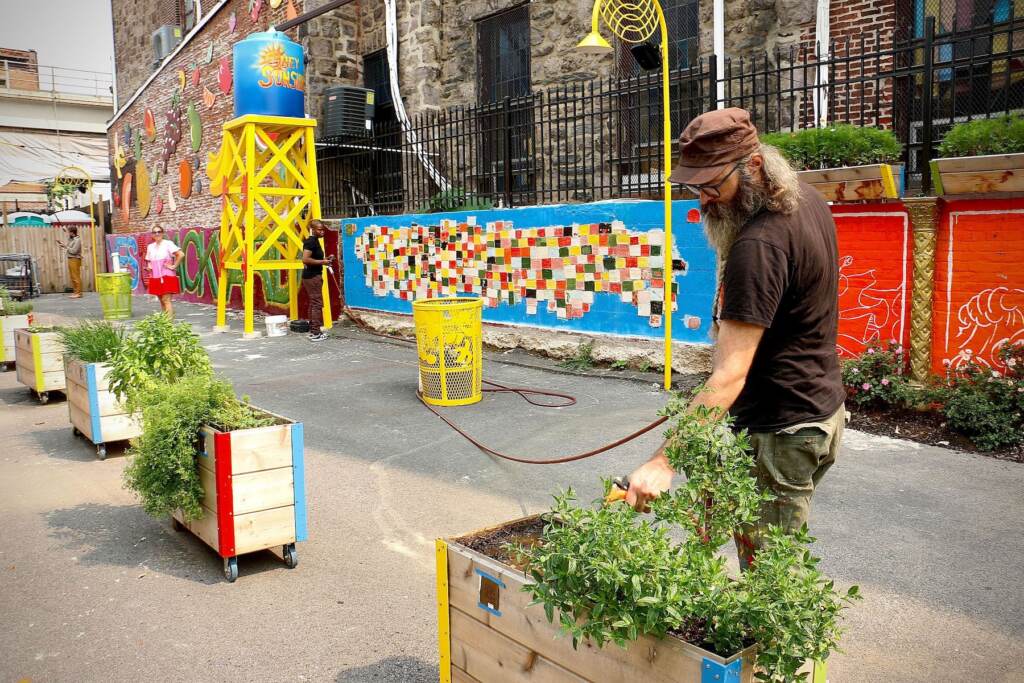
Hammes’ artistic practice is normally centered on sculpture, so making murals and artistic environments was new to him. He started by volunteering at Prevention Point and observing how the Love Lot operates. He helped distribute food, which became a dominant motif of his design.
Hammes cut silhouettes of giant fruits and vegetables from plywood, and brought the shapes to Prevention Point, and asked participants to help paint them. He also created a tile-making workshop and invited participants to press letters into the wet clay, spelling out names of lost loved ones.
Hundreds of tiles are assembled on a memorial wall. Many are simply names, like “Michael,” “Barbara 1993,” and “Rene and Rachelle.” Some have messages, like “Krissy, Scotty and I Miss You, Love Mommy,” “I Miss Nafis,” and simply “Please Stay.”
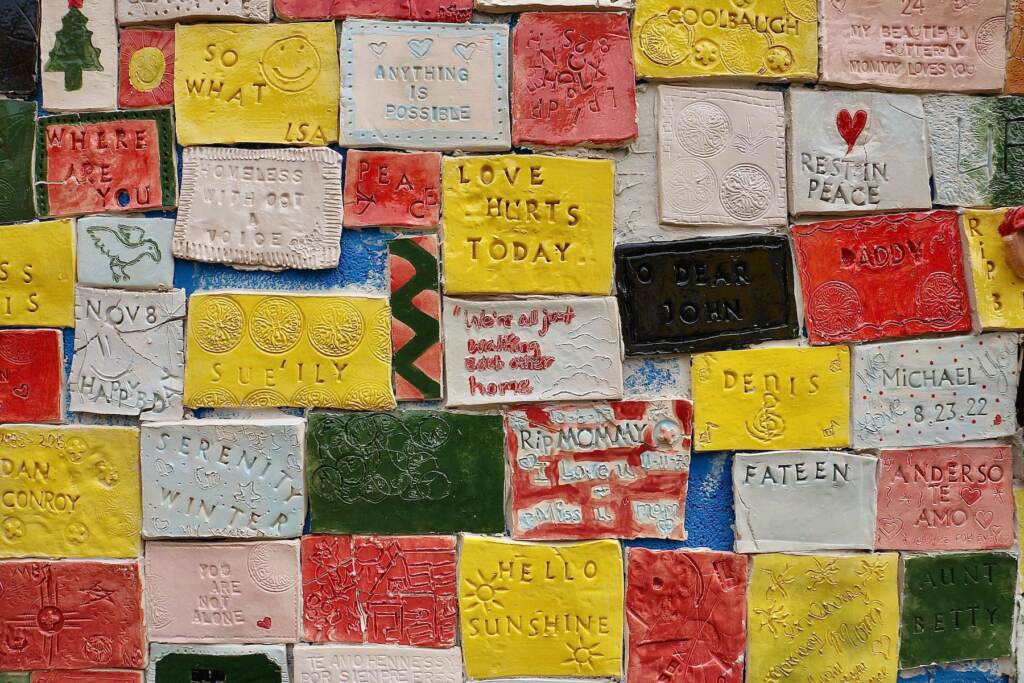
“One of the things that you learn when you come here is that everybody has lost people. There’s so much loss,” Hammes said. “The idea was to try to have a place where people can just remember their loved ones.”
Hammes suggests participants embed the names of the people they wish to remember, but left it open-ended, allowing them to do whatever they wished. Some made images of, for example, a turtle, a tree, a bird, or a portrait. Others wrote inspirational messages.
“That was really exciting to see because it’s like they’re sending a message to their friends and family and the people that might encounter this,” Hammes said. “There’s hope and there’s the ability to change. That seems to really do something special for people.”
Sunshine powers more than empathy in Love Lot. A solar array on top of a shipping container converted into a food service station is able to run simple cooking equipment and a PA system that can fill the lot with music.
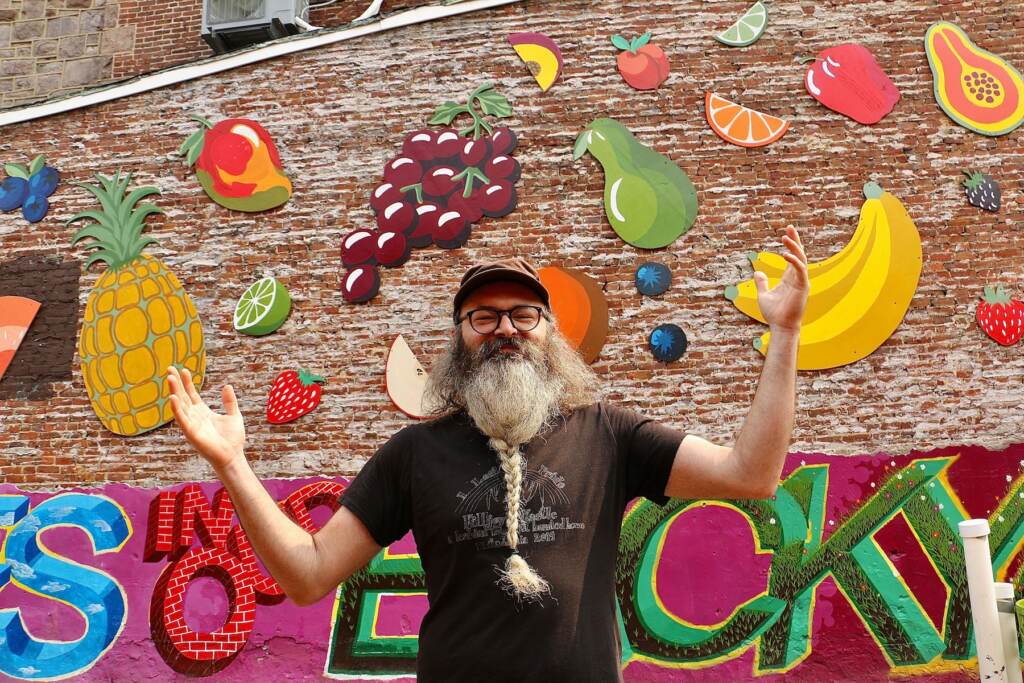
Hammes fabricated streetlights on the perimeter of the lot are powered by solar cells. The bright-yellow steel streetlights are designed with concentric circles, mimicking radiating sunlight. The pattern matches that painted on the shipping container.
“I tried to talk to as many people as possible and ask them about what they think we should do out here. Everyone said: ‘Make it as colorful as possible. Make it as inviting, as welcoming as possible,’” he said. “That was something I really took seriously.”
WHYY is your source for fact-based, in-depth journalism and information. As a nonprofit organization, we rely on financial support from readers like you. Please give today.



